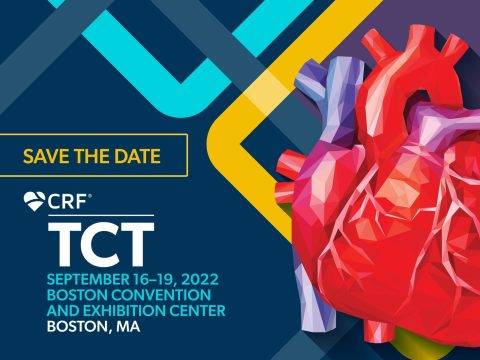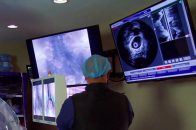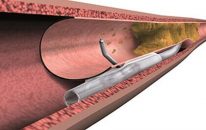We are well aware of the benefits of Fractional Flow Reserve (FFR) to assess coronary artery stenosis. FFR after PCI (post-PCI FFR) has been shown to have prognostic value; however, few studies have included patients with complex three-vessel disease. The impact of intravascular ultrasound (IVUS) or optical computer tomography (OCT) in this field has been…
TCT 2022 | BYPASS CTCA
Studies have shown that the use of computed tomography cardiac angiography (CTCA) prior invasive coronary angiography (ICA) in patients with prior cardiac artery bypass graft (CABG) might reduce procedural time and post procedure kidney injury. 1 out of 5 patients with ischemic cardiomyopathy and prior CABG need to be assessed with ICA within 3 years…
Are FFR and IVUS Similar to Assess Intermediate Lesions?
In coronary artery disease (CAD), lumen area and plaque burden, characteristics and physiological impact are what define prognosis. At present, coronary angiography continues to be the gold standard for CAD assessment. When considering PCI to treat intermediate lesions, FFR has been shown beneficial and safe. Not yet IVUS. 1682 patients with intermediate lesions (40 –…
Optimization by IVUS after FFR Guided PCI: Are There Clinical Benefits for Patients?
Percutaneous coronary interventions have improved during the last decade with 15% rate of target vessel failure (TVF) at 5 years according to the latest reports. We are already familiar with the benefits of functional assessment of lesions with FFR and its clinical outcomes. Additionally, low post PCI FFR values (FFR ≤ 0.83-≤0.91) have been associated…
The Best of the SOLACI-SOCIME 2022 Main Arena: PCI by Radial Access
Angioplasty by transradial access was discussed during a session on Day 2. We were pleased to participate in a conference by Dr. Shigeru Saito on distal radial access. Currently, complications associated with transfemoral access are well-established, so transradial access is suggested as the initial strategy in several guidelines of various associations. However, Dr. Saito shared…
SOLACI-SOCIME 2022 | Treatment of STEMI with Cardiogenic Shock: PCI and MCS Selection and Timing, por el Dr. Mauricio Cohen
Read the most outstanding articles from the first day of the SOLACI-SOCIME 2022 Congress. In this case, consult the presentation by Dr. Mauricio Cohen, entitled “Treatment of STEMI with Cardiogenic Shock: PCI and MCS Selection and Timing”
Coronary Physiology Is Useful in Chronic Kidney Disease
Coronary physiology, FFR and iFR, has been shown safe to defer lesions and effective to save stents by different randomized studies and registries. However, patients with chronic kidney disease have not been thoroughly analyzed yet, which brings us to the question about what to do in the face of their negative evolution, when atherosclerosis develops…
Changes in Coronary Collateral Function Post CTO Intervention
In the last few years, we have seen significant growth of chronic total occlusion (CTO) percutaneous intervention, which has also been considered for patients with viable territory that remain symptomatic. Experienced centers present successful CTO intervention rates close to 90%, especially with a hybrid approach. However, it is still a complex procedure, and target vessel…
An Abbreviated Dual Antiplatelet Regimen Is Also Safe in Patients at High Risk for Bleeding Undergoing Complex Angioplasty
The MASTER DAPT study analyzed the results of an abbreviated (mean 34 days) vs. conventional dual antiplatelet therapy (DAPT) in 4579 patients treated with angioplasty and a biodegradable polymer sirolimus-eluting stent. This recent publication on the same study analyzed the evolution within the same strategies of the subgroup of patients with complex angioplasty and compared…
Prognostic Value of Structural and Functional Microvascular Dysfunction in Patients with Nonobstructive Coronary Artery Disease
Coronary microvascular dysfunction (CMD) is a paramount factor involved in the development of anginal syndromes. Among patients with angina and nonobstructive coronary artery disease with CMD, two patterns have been identified using minimal microvascular resistance: structural CMD, and functional CMD. Structural CMD is characterized by decreased coronary flow reserve (CFR) in the presence of increased…
Hand Function after Distal Radial Access: Is it Safe?
The benefit of the transradial approach in percutaneous interventions is well known. Its main limitation is radial artery occlusion (RAO) which would compromise the artery for future use in percutaneous procedures. Even though it is clinically silent, reported cases might reach 33%. More recently, the distal radial access (DRA) has surged as an alternative to…










